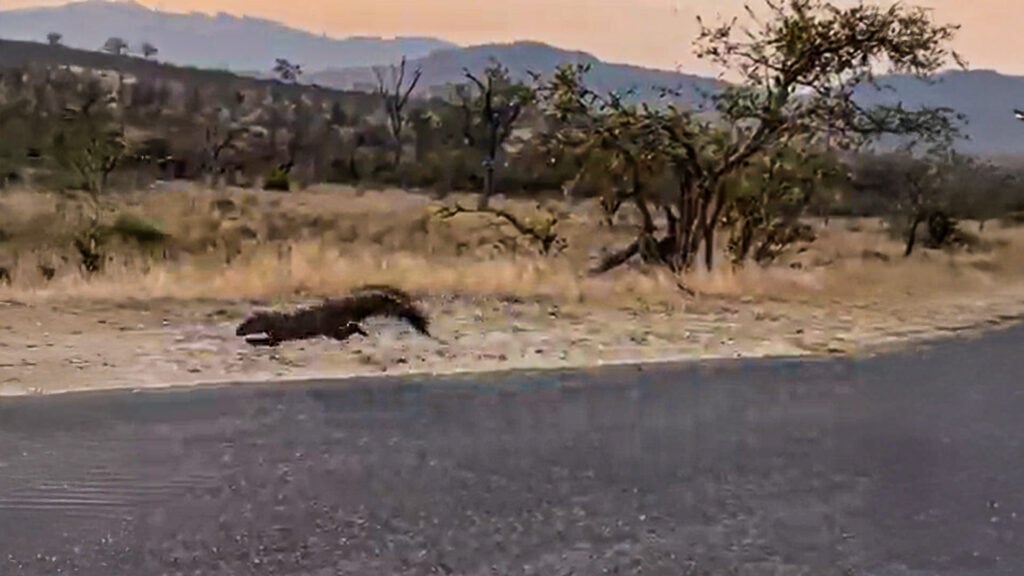
Zainub Moosa sent this short video to Latest Sightings. She filmed it while visiting the Kruger National Park in South Africa.
Fleeing creature misidentified
Zainab told Latest Sightings that she had stopped to photograph the beautiful sunset over the mountains when some movement in the grass alongside the road caught her eye.
She then realised that something was chasing it towards the road and started filming. In her report, Zainab describes the pursued creature as a “squirrel”, but it is in fact a striped polecat.
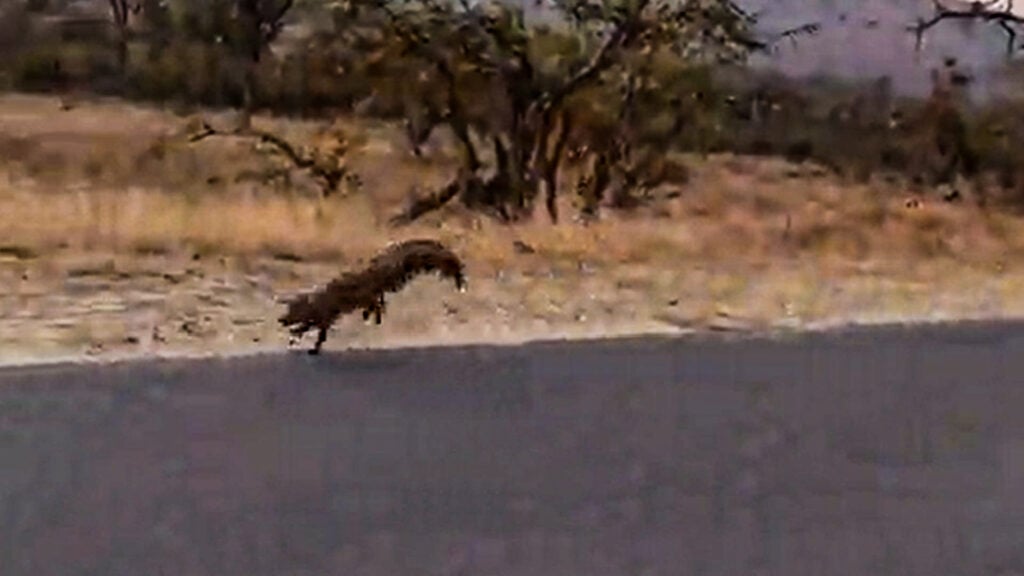
However, her confusion is understandable as very few visitors to the Kruger National Park are fortunate enough to see these rare predators.
Not a squirrel
What gives it away is that it is significantly bigger than a squirrel, with distinctive black and white striped fur.

Although they are not rare, we seldom see striped polecats because they are active at night.
Not hanging around
Complicating identification was the fact that the creature was not hanging around. As mentioned, something was chasing it and, as Zainab panned back to where the polecat emerged, we see it had good reason to flee.
Seconds later, the creature widely regarded as one of the most temperamental in Africa emerged from the roadside vegetation: a honey badger
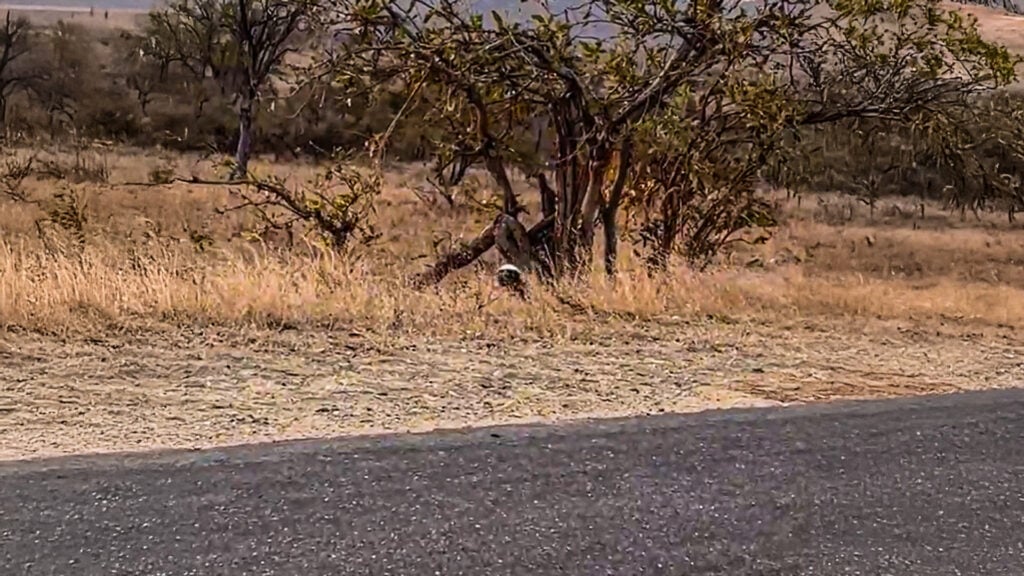
Honey badger don’t care
At first, we see only the distinctive white cap, but shortly afterwards, it comes rumbling out of the grass. One only has to look at its rolling gait to know that it won’t easily shy away from confrontation.
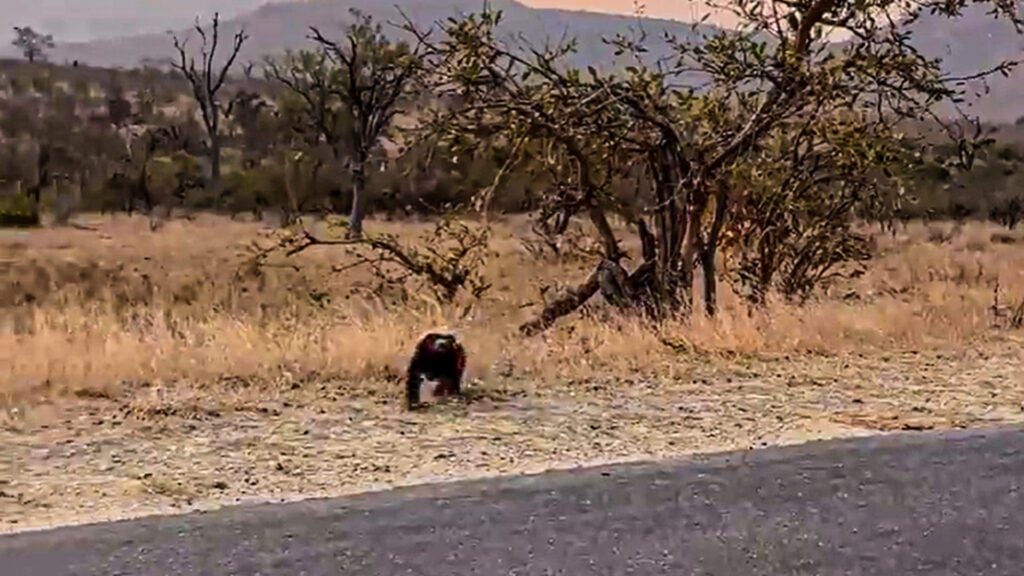
As the meme goes, “Honey badger don’t care”.
With the polecat long gone by now, the badger then focused its attention on Zainab’s vehicle. Boldly, it trotted out into the road, snarling its displeasure at anyone and anything within earshot.
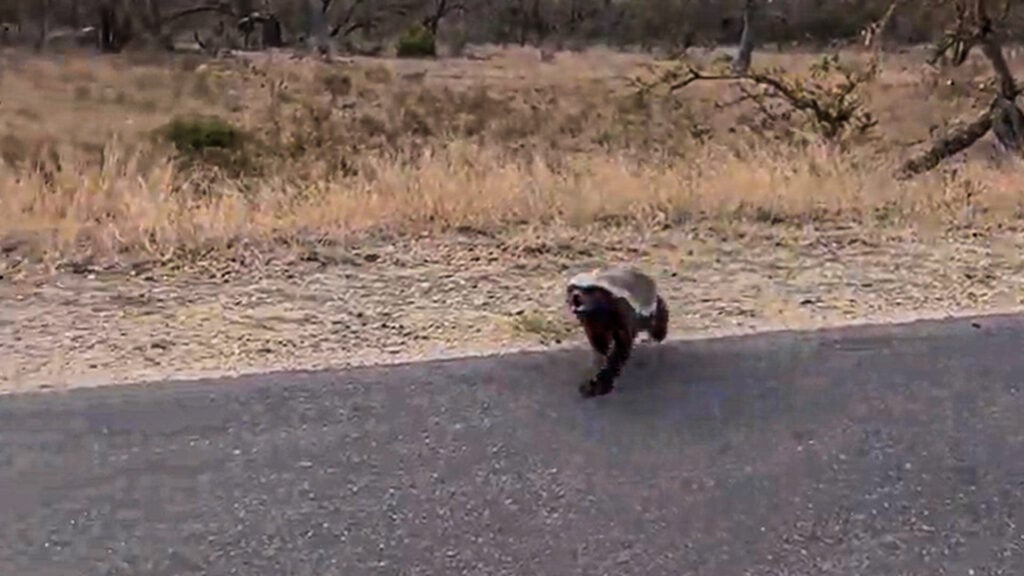
Soon enough, though, the honey badger realised that its aggression was misplaced. Also, according to Zainab, the badger had a meal waiting nearby.
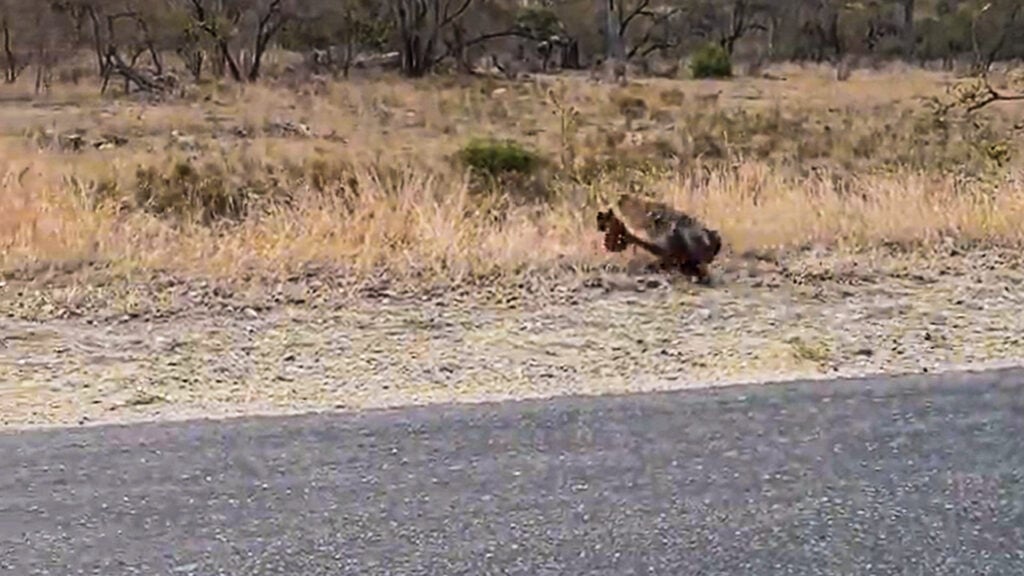
She said that after the honey badger disappeared, she could still hear it snarling as it finished off its meal.
Get our Best Sightings as they Come in
Zainab concluded by saying, “It was really exciting, I haven’t experienced something like this in my 21 years of going to the Kruger National Park.”
We’re sure you’ll agree. After all, it’s not every day that you get to see two of the park’s least frequently spotted inhabitants embroiled in a dispute.
More about striped polecats
These nocturnal predators are also known as zorillas and African skunks. They and are most closely related to the smaller African striped weasel.
Sizewise, their body measures 30–38 cm (12–15 in), excluding their long, bushy tail. They weigh 0.7 to 1.4 kg (1.5 to 3.1 lb).
Like skunks, they can spray a vile fluid at predators to deter attack. Additionally, their distinctive colouration warns predators to stay away. A memo which apparently didn’t reach the honey badger! When all else fails, they may feign death.
Striped polecats feed on insects, reptiles and small mammals, up to the size of a hare.
They are mostly found in open habitats with some cover, across all of sub-Saharan Africa.
